Description of types and varieties of lemons
The benefits of lemon have been known since ancient times. This culture is exotic both in taste and appearance. We are used to the fact that all lemon fruits look the same, but there are many varieties. Moreover, they can be grown not only in gardens, but also at home. We will tell you what kinds of lemons there are in this article.
What types of lemons are there?
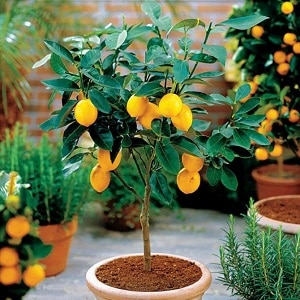 From a botanical point of view lemons - berries. They belong to the Citrus genus. All varieties of lemon have 2 common characteristics: sour pulp and citrus smell.
From a botanical point of view lemons - berries. They belong to the Citrus genus. All varieties of lemon have 2 common characteristics: sour pulp and citrus smell.
There are about 150 varieties of lemons. They are divided into botanical, which are decorative, and commercial, intended for sale.
The lemon tree reaches a height of 5-8 m. The crop can also develop as a bush up to 2-3 m.
The fruits vary in size and shape. The smallest correspond to a medium plum, the largest weigh 2 kg or more.
According to the shape of the fruit, lemons are divided into:
- oval;
- pear-shaped;
- teardrop-shaped;
- rounded.
Lemons are divided into:
- Ordinary. These are the most common varieties for trade. Among them, Lisbon lemon can be called the champion in taste. The plant tolerates drought and coolness well and produces up to 60 fruits per year. The tree is dotted with thorns, the leaves are large and wide with a few wrinkles and a strong aroma. Lisbon has oval fruits up to 150 g. The pulp is juicy with a small number of seeds, the skin is smooth, thin, edible.
- Rough. This species is distinguished by an abundance of thorns on the branches and thick skin of the fruit. A typical representative is the Rosso lemon.This is a tree with a large spreading crown up to 2 m high and hard dark green leaves. Lemons have a red-orange color and slightly orange flesh. There are almost no seeds. The fruits are pear-shaped with a thick, rough, bumpy skin, weighing up to 160 g. Rosso is a hybrid of lemon and citron, which is why it has such an unusual appearance and is often used as a decorative one.
- Sweet. The fruits contain little acid. One of the sweetest varieties is Ponderosa (sometimes translated as Panderosa). It was the result of crossing lemon, citron and grapefruit. The tree grows up to 2 m and has hard, round-oval, smooth leaves. There are 5-7 fruits on a tree, but they are large. With proper care, the largest lemon reaches 600-700 g. The pulp of the fruit is light green, sweetish, with a large number of seeds.
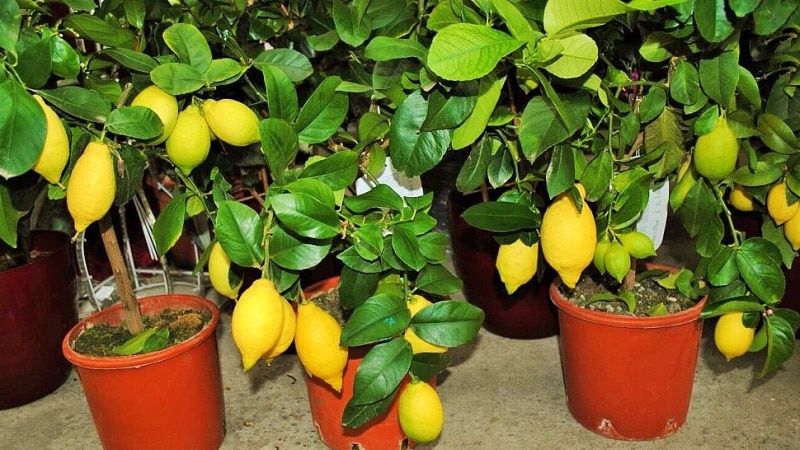
Lemon varieties suitable for home cultivation
The plant is grown in the apartment not only to receive fruits. It looks decorative in any room, has a pleasant smell and releases beneficial phytoncides into the air.
Reference Indoor lemon begins to bear fruit after 6-8 years if it is grown from seeds, and after 3-4 years if planted from cuttings.
At home, a lemon tree does not grow more than 2 m. Proper care includes maintaining temperature conditions, a constant level of humidity, and the presence of bright light for at least 6 hours a day. The leaves are wiped from dust once a week. The soil for the plant is half mixed with peat.
All domestic varieties it is necessary to form a crown. Extra branches will take away the plant's strength. Most varieties do not tolerate direct sunlight well, so choose the eastern or south-eastern side for the plant.
Important! During fruiting of the lemon tree, stop watering and fertilizing.
Let's look at the varieties of indoor lemons.
Maykop
The variety is characterized by high productivity and bears fruit for 15-20 years. The tree has a wide crown and dark green leaves with a waxy coating. Thin-skinned fruits are light yellow in color, aromatic, weighing up to 140 g.
Maikop is unpretentious in care, tolerates drought well, prefers slight shading or diffused light. When exposed to direct sunlight, growth slows down.
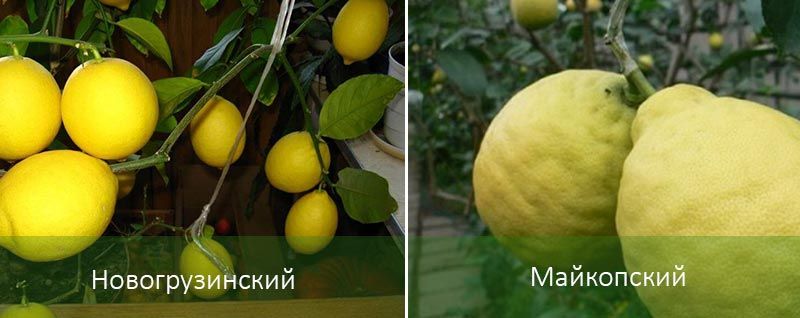
Novogruzinsky
The variety is distinguished by its yield and taste. The tree is considered tall and grows up to 2.5 m in height. The crown of the tree is spreading with long shoots and numerous thorns. The leaves are smooth, light green, rounded with pointed ends. The weight of the fruit reaches 180 g. The skin is dense, lumpy. The fruit pulp is fine-grained and aromatic.
Novogruzinsky lemon does not require careful care. The main thing is to observe the temperature regime and regular hydration.
Description of New Zealand lemon
The difference between the New Zealand variety and others is its large fruits. New Zealand loves cool weather and regular moisture by spraying the leaves.
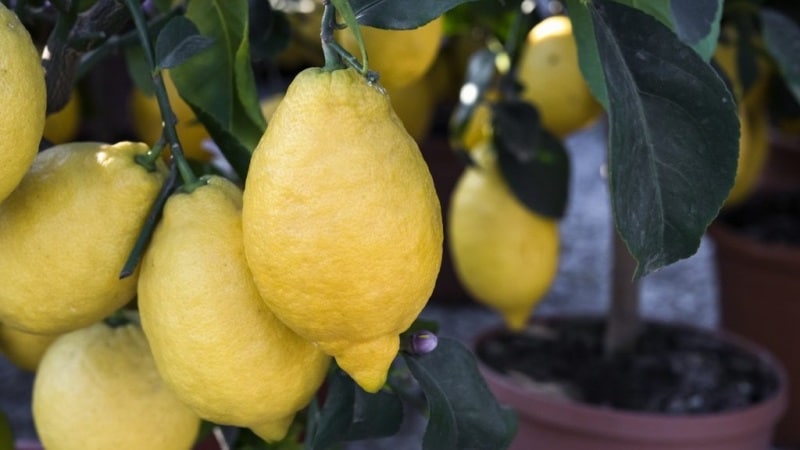
The tree grows up to 2-3 m and has a sparse, wide crown. The leaves are large, oval, dark green. The fruits also have an oval shape and lumpy skin. The weight of one lemon reaches 800 g. The pulp is loose, juicy, and the peel is thick.
Volcano
The tree is low-growing, up to 1.5 m in height. The crown is dense, the leaves are dense and narrow. The fruits are 4 cm long. The skin is thin and soft. The pulp is juicy and has a distinct taste.
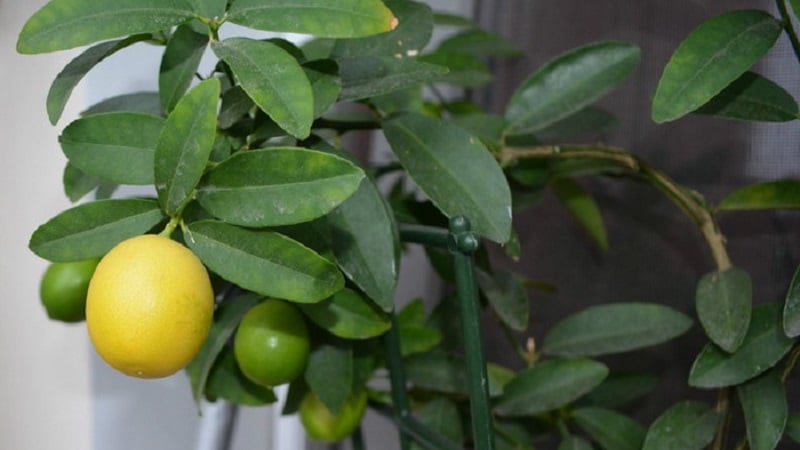
Lemon care Vulcan at home simple. The plant adapts well to indoor environments and tolerates dry air well. The only requirement is fertile soil.
Lisa
The high-yielding variety has a high content of vitamins. The height of the tree does not exceed 1.5 m. It has a wide crown and small thorns. The foliage is dense, the leaves themselves are small, dense, hard and glossy.
Lisa's fruits are round, small, weighing up to 150 g. The color is dark yellow, sometimes with an orange tint. The peel is thin, soft, the flesh is juicy, sweetish, with an orange flavor.
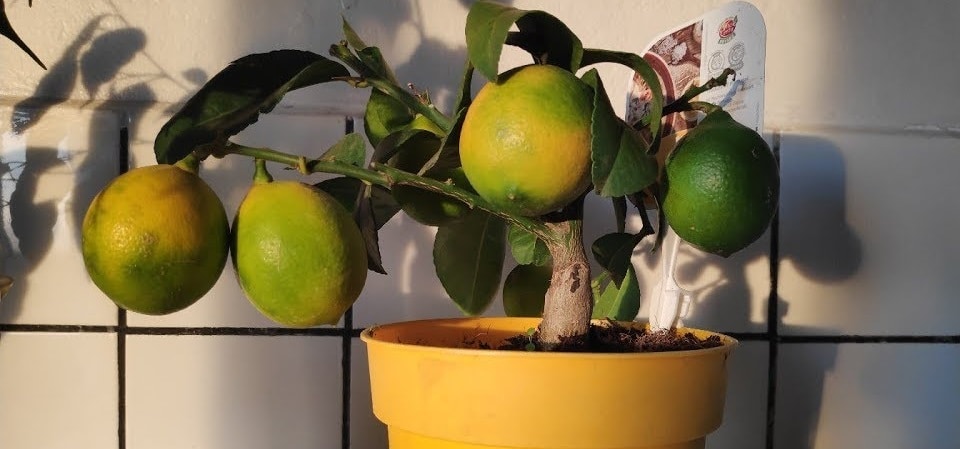
For the variety to bear fruit, conditions close to natural must be created. Requires high humidity and good lighting. Lisa loves sunlight.
Attention! It is not recommended to move the plant.
Monachello
Productivity is average. The tree grows slowly and barely reaches 2 m in height. The crown is rounded. The leaves are bright green, dense, large, with wavy edges. The fruits are oval, bright yellow, medium in size (up to 150 g in weight). The skin is thin, smooth, but uneven. The pulp is tender, sweetish, tart and not very juicy.
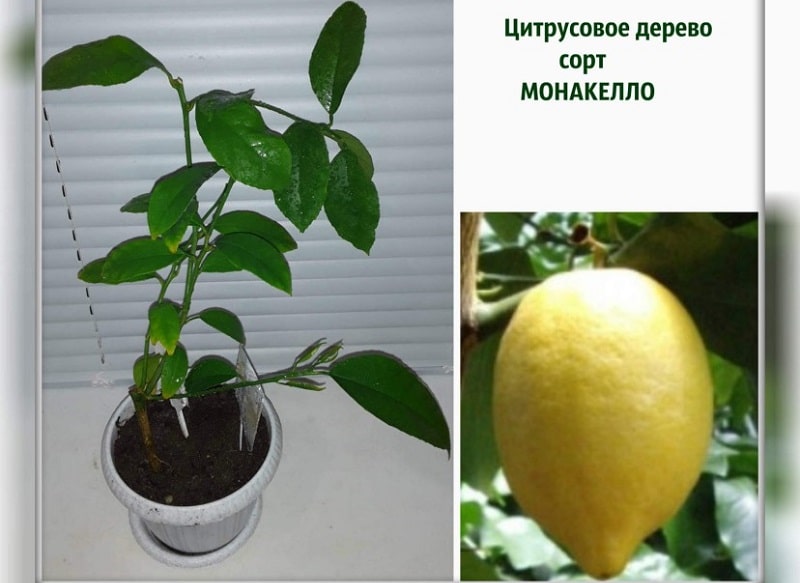
At home, Monachello needs constant lighting and loves moisture and warm air.
Interesting things on the site:
Land for lemon growing at home
Rare varieties of lemons
Unusual varieties of lemons:
- Japanese (photo below). Difficult to grow at home, it prefers a natural environment. Japanese lemon, or yuzu, was developed in China, but became widespread when it came to Japan. The plant belongs to low shrubs and trees and reaches 4 m. It may have several trunks, and there are thorns on the shoots. The fruits resemble tangerines in appearance, up to 7 cm in diameter, weighing 50-60 g. The peel is thick and rough. The pulp of Japanese lemon contains more acid than other varieties.
- Vanilla.It is grown both in the natural environment and at home. The tree does not grow more than 1.7 m in height. The foliage is green, dark, sparse. The fruits are round, medium in size and rich yellow in color. The pulp is light yellow, juicy. The fruits have a vanilla aroma and do not contain acid.
- Hand of Buddha. This variety has the most unusual fruits. They are distinguished by their clustered arrangement and elongated shape, vaguely reminiscent of a hand. These fruits, with their thick skin, have very little pulp. They are most often grown as ornamental plants, but are also eaten and added to tea. The Buddha's Hand grows in the form of a bush from 1 to 3 m high with large leaves.
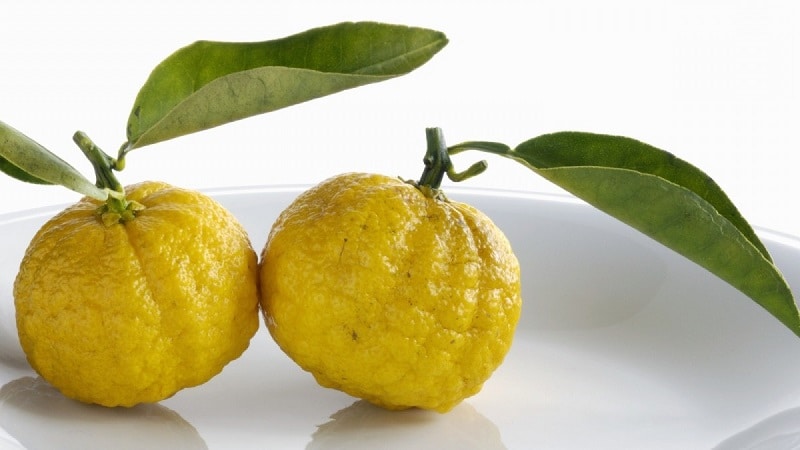
Varieties of lemons grown in Turkey
Turkish lemons have a very sour taste and an abundance of seeds:
- Enterdonat. He ripens early. The fruits are large, yellow, cylindrical and light green in color. The peel is thin and shiny. The tree is medium-sized, up to 3 m in height. The foliage is large, there are no thorns on the tree. The fruit pulp is crispy and greenish-yellow.
- Molla Mehmet. These lemons are not very large, their weight does not exceed 130 g, diameter - 6 cm. The shape of the fruit is elliptical. The color is yellow, the peel is of medium thickness, the flesh is yellow, juicy, sour.
- Lamas. The fruits are cylindrical, medium in size (6-7 cm in diameter), yellow, with a thick peel. This fruit has a subtle pleasant aroma. Lamas trees are very tall and upright. The variety is considered one of the highest quality; the fruits are suitable for long-term storage.
- Italian. Its other name is Black Lemon. Differs in quality and productivity. The fruits are oval and large. The skin is medium thick, lumpy. The pulp is very juicy and aromatic.
- Kutdiken.In terms of yield and shelf life, it is one of the main varieties for mass production. The fruits of Kutdiken are large, with juicy pulp. The peel is dense and smooth. The tree is not very tall with several branches.
- Cypriot. The fruits of this variety have a rough yellow skin and a cylindrical shape. Medium sized lemons. Cyprus is well suited for home cultivation. The tree has a pyramidal shape.
In Turkey, the crop is grown on citrus plantations specifically for sale. Although these lemons are the most sour in taste, they are very rich in vitamins because they grow in an ideal climate for citrus fruits.
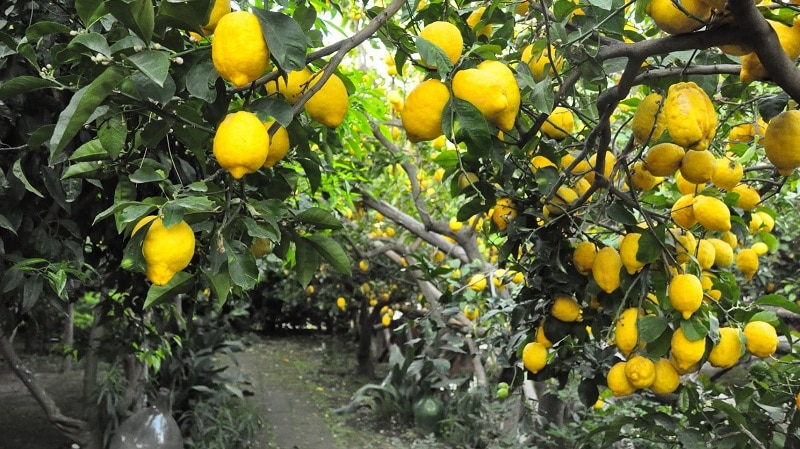
How to determine the variety of lemon
Lemon varieties are determined by the shape of the fruit and leaves. Several fruits are examined. To determine it, they are guided by such characteristics as the color and thickness of the skin, the aroma and properties of the pulp.
The height and shape of the tree, the presence of shoots, thorns and their number, the color of the leaves and bark also matter.
It can be difficult to accurately determine the variety based on the shape of the leaves. For example, narrow leaves will tell you that you may have Vulcan, Melarosa, Rosso, Genoa, Lisbon or Vanilla lemons.
Reference. Citrus crops, including lemon, always have larger leaves that grow in the shade.
Conclusion
Residents of the southern regions can grow crops in their gardens and enjoy the harvest. For those who live in cooler climates, there is an alternative to growing lemons at home, although it will require more effort. The result will delight you not only with tasty and healthy fruits, but also with decorative properties.